
Search cheap and promo Philippine Airlines flight tickets here!
Search and book cheap flights with Philippine Airlines
Routes
Schedule
Price from
Philippine Airlines Flight Schedule
Airline | Departure Time | Arrival Time | Origin airport | Destination airport | |
|---|---|---|---|---|---|
Philippine Airlines | 22:50 | 24:30 (+1 day) | Cebu (CEB) | Manila (MNL) | Book flight |
Philippine Airlines | 22:55 | 24:50 (+1 day) | Davao (DVO) | Manila (MNL) | Book flight |
Philippine Airlines | 23:15 | 01:15 (+1 day) | Manila (MNL) | Davao (DVO) | Book flight |
Philippine Airlines | 23:20 | 03:50 (+1 day) | Bangkok (BKK) | Manila (MNL) | Book flight |
Philippine Airlines | 23:20 | 24:55 (+1 day) | Cagayan de Oro (CGY) | Manila (MNL) | Book flight |
Philippine Airlines | 23:25 | 24:45 (+1 day) | Iloilo (ILO) | Manila (MNL) | Book flight |
Philippine Airlines | 23:30 | 24:50 (+1 day) | Bacolod (BCD) | Manila (MNL) | Book flight |
Philippine Airlines | 23:55 | 01:25 (+1 day) | Cebu (CEB) | Manila (MNL) | Book flight |
Book Cheap Flights with Traveloka Coupon
ส่วนลดเที่ยวบิน
Fly Domestic with Traveloka
Airline Facilities

| Check-in Baggage |
|---|
| 25 kg |

| Cabin Baggage |
|---|
| 7 kg |

| Check-in Time Limit |
|---|
| 1 hour before departure |
Flight Services in Traveloka
Smart Combo
With Smart Combo tickets from Traveloka, you can book premium-service flights at up to 40% off. Enjoy flights with Air France, Cathay Pacific, Etihad, Garuda Indonesia, KLM, Lufthansa, and Singapore Airlines at a more affordable price. All you have to do is find the flights marked Smart Combo, then select the flight that suits your needs
Multi-city Flights
High Flexibility Ticket
Baggage
Seat Selection
In-flight Meal
Refund
Reschedule
Online Check-in
Price Alert
Flight Status
About Philippine Airlines
Philippine Airlines: An Introduction
MABUHAY! Welcome to the Heart of the Filipino - Philippine Airlines
Mabuhay. Welcome onboard Asia’s first airlines, and the Philippines’ first and only 4-star flag carrier.
For almost Nine decades. Philippines Airlines has been part of millions of journey and milestones. Our service culture personified in our wholehearted care or Buong-Pusong Alaga – care that goes beyond the call of duty, coupled with our world-class fleet, and product and service innovation – sets up apart as trailblazer in the industry, and has made us truly The Heart of the Filipino.
Today, our hearts beam with pride as we are the Philippines’ first and only 4-star airlines, as rated by Skytrax, the global air transport rating authority.
Fly with us across Asia, North America, Europe, Oceania and the Philippines, and experience a heartwarming, world-class journey that celebrates the unique warmth and hospitality from the heart of the Filipino.
Philippine Airlines Seat Class
Economy Class
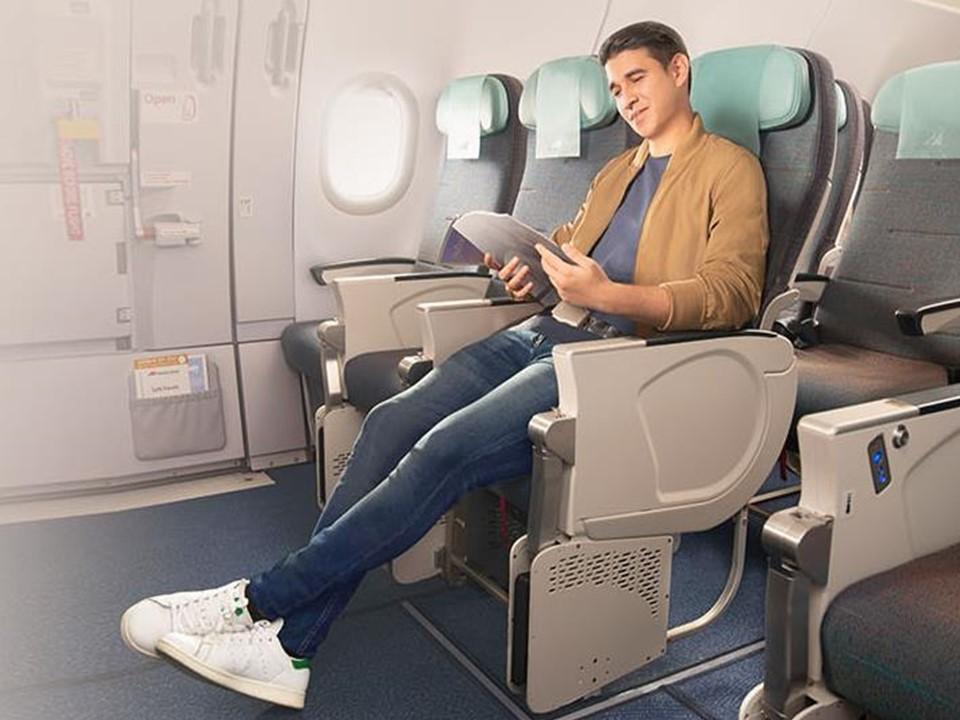
The Heart of convenient travel. Fly the way you deserve with full-service flights at surprisingly affordable fares onboard our Economy Class. A better flying experience awaits you on our full-service flights with additional check-in baggage of up to 25 kg. On top 7 kg hand carry (Baggage allowance varies per route), comfortable seat, filling snack on domestic and sumptuous hot meals on international flights, coupled with our signature buong-pusong alaga (Wholehearted service)
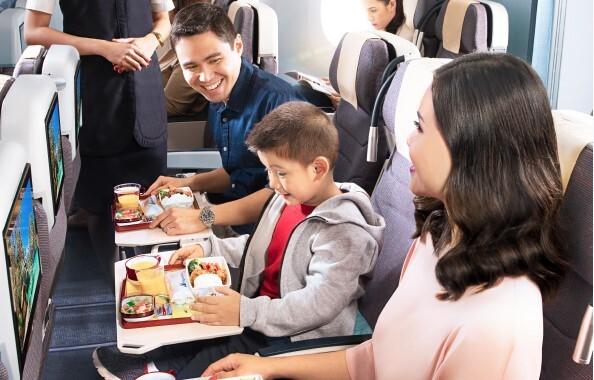
Passengers in Economy Class and Premium Economy will be offered a selection of local and fusion dishes, complete with alcoholic and non-alcoholic beverage options. Alcoholic beverages served in this class include whiskey, gin, vodka, brandy, red wine, white wine, and beer. Snacks are also available for flights longer than 45 minutes, except on Q300 and Q400 aircraft.
Premium Economy Class

The Heart of Premium Experience. Whether you’re travelling for business or leisure, Premium Economy offer a better flying experience that’s a class above. Flying Premium Economy mean never waiting in line. Boarding your flight is breeze with our priority check-in and boarding. Enjoy additional baggage allowance of up to 30 kg. On top 7 kg hand carry. (Baggage allowance varies per route) and relax in the skies with extra legroom and a more relaxing recline – all in the privacy of an exclusive cabin. * Seat and cabin experience varies per route/Aircraft type
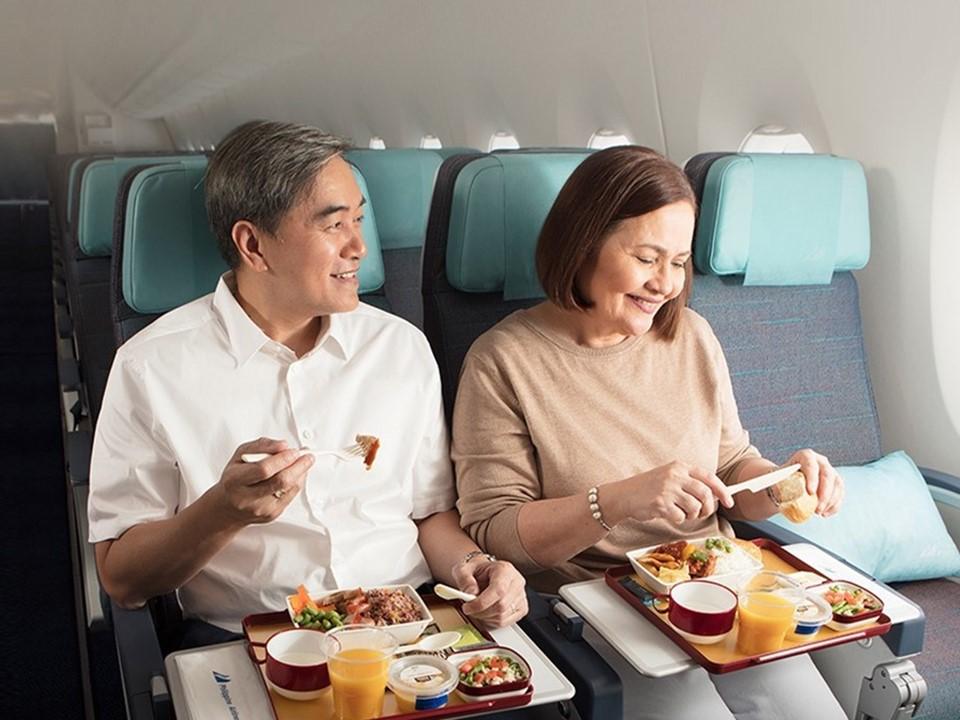
In-flight Meal
Passengers in Economy Class and Premium Economy will be offered a selection of local and fusion dishes, complete with alcoholic and non-alcoholic beverage options. Alcoholic beverages served in this class include whiskey, gin, vodka, brandy, red wine, white wine, and beer. Snacks are also available for flights longer than 45 minutes, except on Q300 and Q400 aircraft.
Business Class
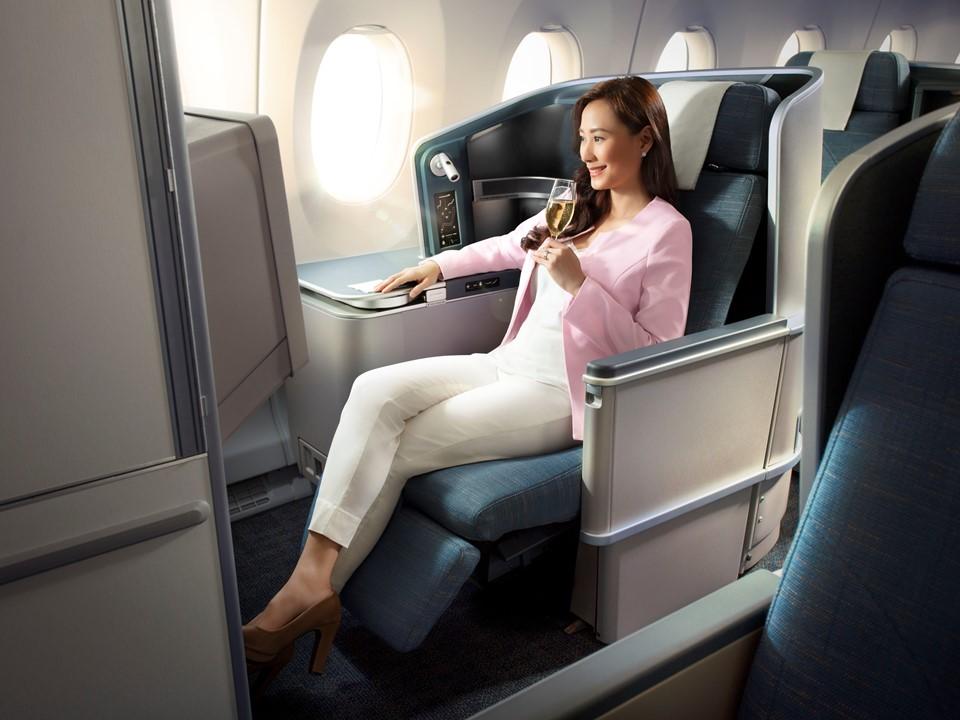
Experience luxurious treatment even before your journey begins with exclusive privileges. At the airport, you can check-in for your flight with utmost ease at our dedicated Business Class counters and enjoy generous baggage allowance of up to 40Kg for your travel essential and more. Once you have already check-in, our VIP lounge await to welcome you. You will also enjoy priority boarding, so you can get on your flight with ease and convenience. Philippine Airlines’ business class, offers the ultimate in-flight comfort with reclining seats, Enjoy world-class entertainment with over 300 Hrs. of movies, TV Shows on personal touch-screen TV. Passengers can use the laptop charging port, reading light or even stay online while cruising above the clouds, use personal device to connect through the myPAL WiFi for free, or surf longer with our affordable upgrade plans.
* Seat and cabin experience varies per route/Aircraft type
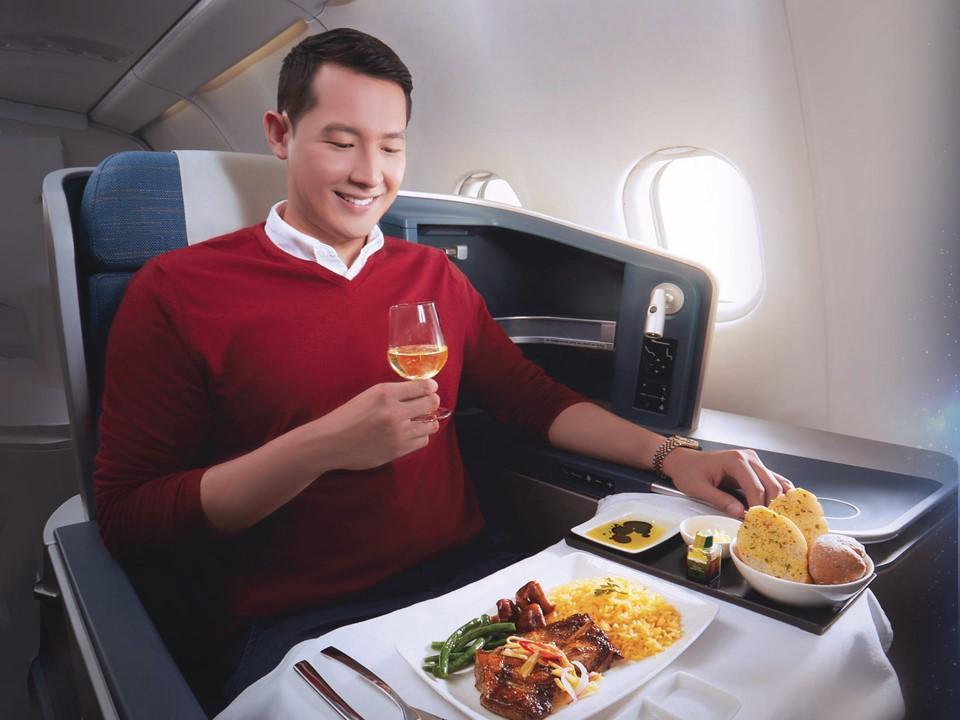
In-flight Meal
Go on gastronomic adventure with our sumptuous Business Class menu that incorporate full course gourmet meal and lighter dining options- all inspired by Filipino, Asian, and Western flavors and meticulously prepared by world-class chefs. For refreshment, take your pick from our wide selection of cold and hot beverage, cocktails, liquors, beers, wines and champagne. You can also indulge on inflight snacks and treats from the best of the Philippines. If you’re flying long haul, get you fill whenever you want with our New Dine-at-Your-Leisure service.
Philippine Airlines Privilege Programs
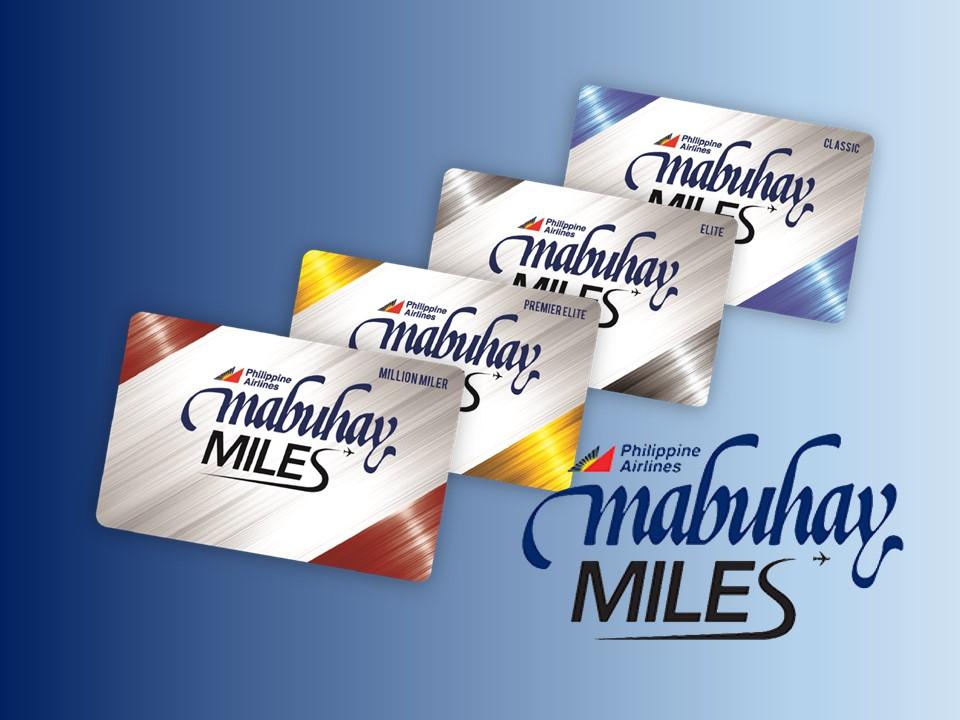
Mabuhay Miles
Philippine Airlines offers a frequent flyer program called Mabuhay Miles, open for any passenger older than 2 years old. Mabuhay Miles allow members to earn points every time they embark in domestic and international flights, both with Philippine Airlines and other flight partners, such as All Nippon Airlines (ANA) and Etihad Airlines. Points can be redeemed for a class upgrade, merchandises, ticket discounts, car rentals, hotels, and many more. Passengers can also earn points when they shop at the Sky Boutique online store. In addition, members of Mabuhay Miles Elite and above are granted access to the airport lounge.

Airport Lounge
Relax in our Mabuhay or partner VIP lounges that are exclusive to Business Class passengers and Mabuhay Miles million milers, Premier Elite, and Elite members flying domestic and international flights are eligible for access to airport lounges. Passengers can enjoy facilities such as internet connection, light meals, beverages, flat-screen TV with various channels and video options, and even massage services. Passengers can also charge their gadgets or catch up on their work using such business facilities as fax machine, telephone, and computer. Philippine Airlines’ domestic lounges are spread across several airports in Manila, Davao, General Santos, and Cebu, while its international lounges can be found in airports in many airports such as Abu Dhabi, Dubai, Bali, Bangkok, Singapore, Hong Kong, New York, Los Angeles, Toronto, Vancouver, Melbourne, Sydney, Narita, Haneda, Nagoya, Osaka, etc.
Philippine Airlines Fleet
Boeing 777-300ER

- Economy Class
- Business Class
Available (myPAL eSuite)
- 3-4-3 (Economy Class)
- 2-2 (Business Class)
Not Available
- 34 inches (Economy Class)
- 78 inches (Business Class)
Available
Airbus A350-900

- Economy Class
- Premium Economy Class
- Business Class
Available (myPAL eSuite)
- 3-3-3 (Economy Class)
- 2-4-2 (Premium Economy Class)
- 1-2-1 (Business Class)
Not Available
- 33 inches (Economy Class)
- 38 inches (Premium Economy Class)
- 44 inches (Business Class)
Available
Airbus A330-300 (Tri-Class)
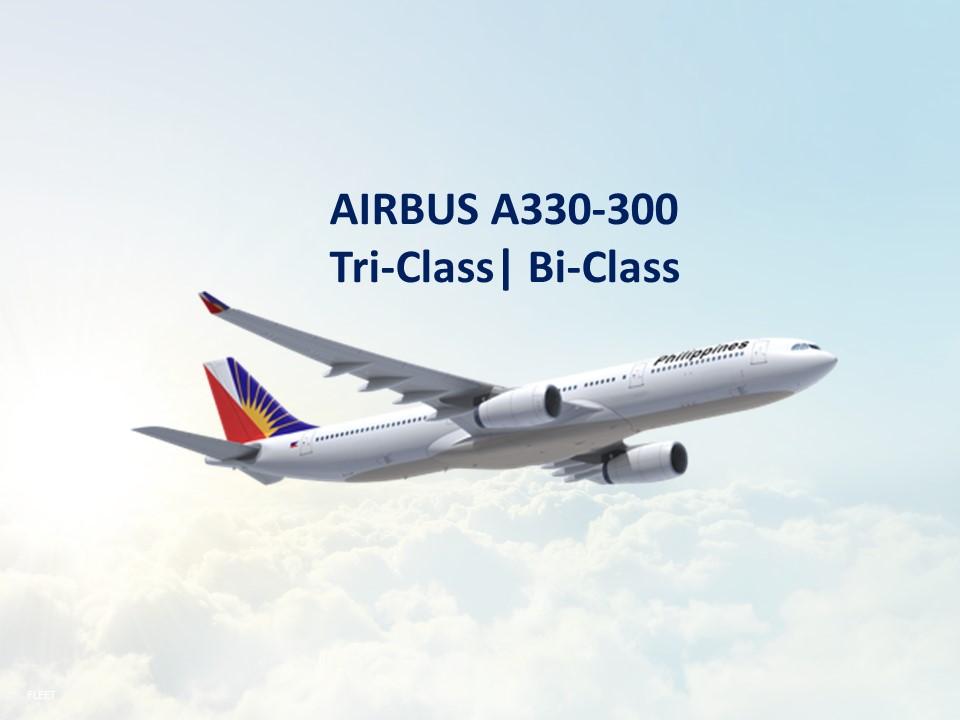
- Economy Class
- Premium Economy Class
- Business Class
Available (myPAL eSuite)
- 2-4-2 (Economy Class)
- 2-3-2 (Premium Economy Class)
- 1-2-1 (Business Class)
Not Available
- 33 inches (Economy Class)
- 38 inches (Premium Economy Class)
- 44 inches (Business Class)
Available
Airbus A330-300 (BI-Class)

- Economy Class
- Premium Economy Class
- Business Class
Available (myPAL eSuite)
- 3-3-3 (Economy Class)
- 3-3-3 (Premium Economy Class)
- 2-2-2 (Business Class)
Not Available
- 33 inches (Economy Class)
- 38 inches (Premium Economy Class) *Domestics Routes Only
- 44 inches (Business Class)
Available
Airbus A321neo
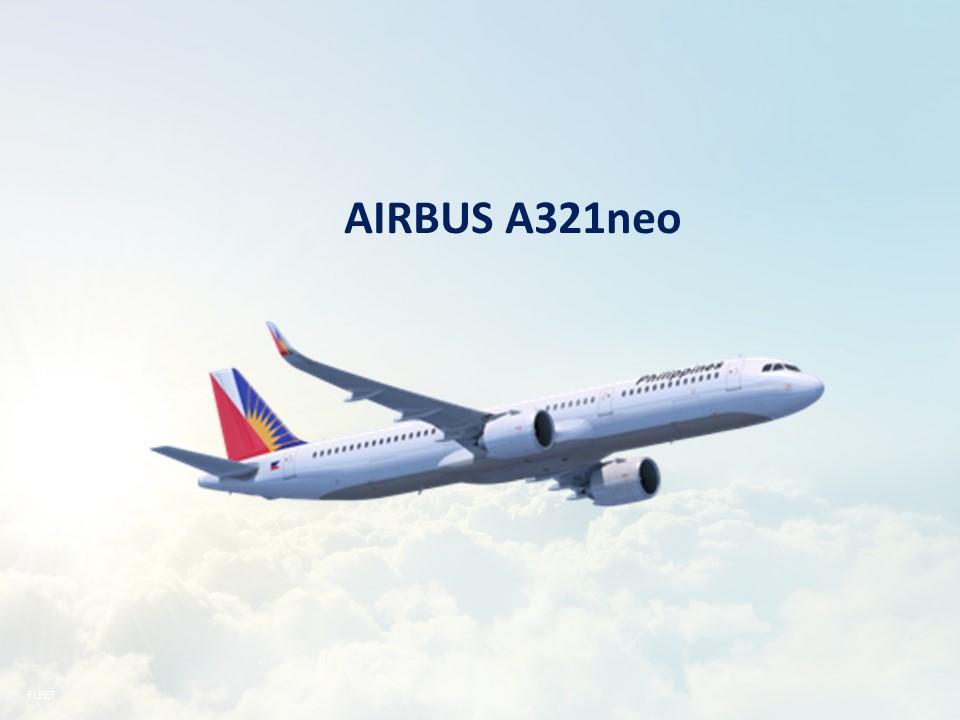
- Economy Class
- Business Class
Available (myPAL eSuite)
- 3-3 (Economy Class)
- 2-2 (Business Class)
Not Available
- 32 inches (Economy Class)
- 60 inches (Business Class)
Available
Airbus A321neo SR
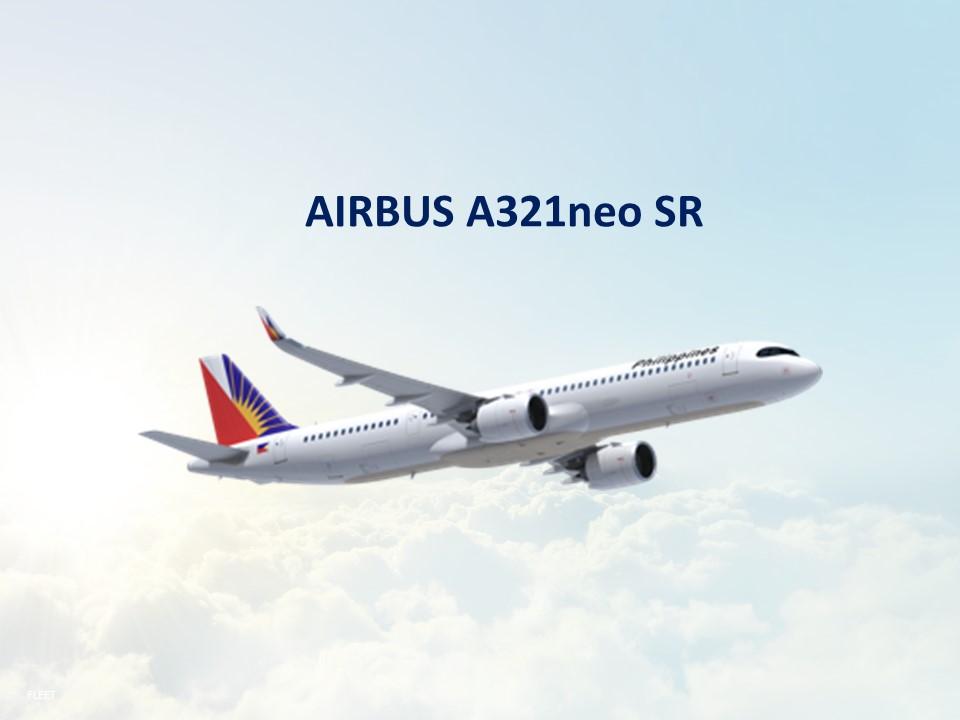
- Economy Class
- Business Class
Available (myPAL eSuite)
- 3-3 (Economy Class)
- 2-2 (Business Class)
Not Available
- 31 inches (Economy Class)
- 45 inches (Business Class)
Available
Airbus A321ceo
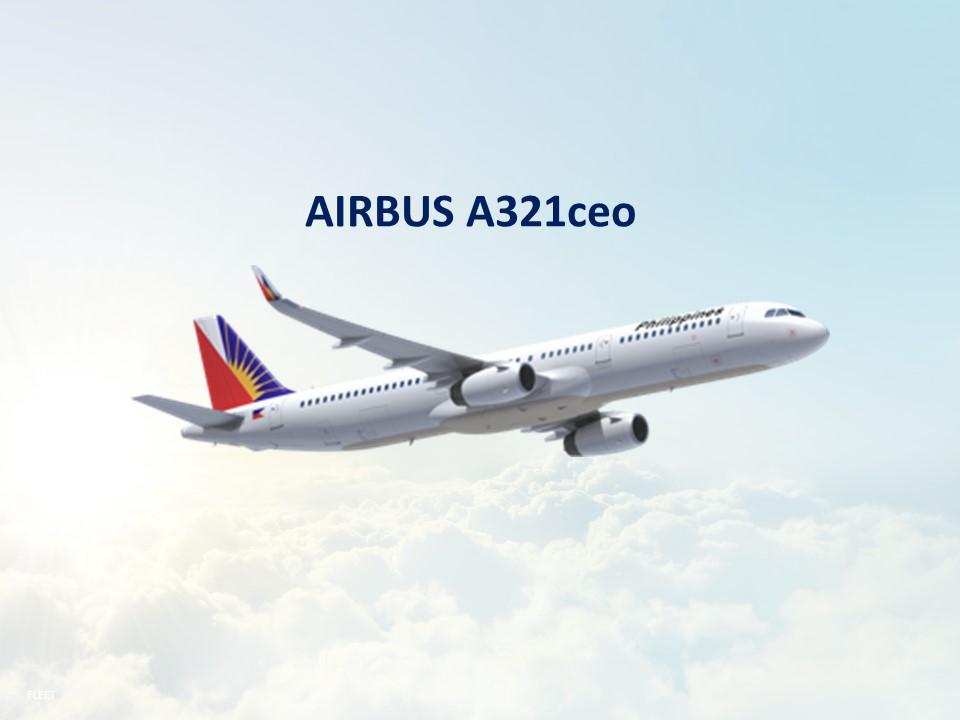
- Economy Class
- Premium Economy Class
- Business Class
Available (myPAL Player BYOD wireless)
- 3-3 (Economy Class)
- 3-3 (Premium Economy Class)
- 2-2 (Business Class)
Not Available
- 31 inches (Economy Class)
- 34 inches (Premium Economy Class) *Domestic Routes Only
- 37 inches (Business Class)
Available (Specific Seat Class)
Airbus A300-200

- Economy Class
- Premium Economy Class
- Business Class
- Available (myPAL eSuite)
- Economy Class: overhead screens
- Business Class: embedded screens
- 3-3 (Economy Class)
- 3-3 (Premium Economy Class)
- 2-2 (Business Class)
Not Available
- 30 inches (Economy Class)
- 37 inches (Premium Economy Class) *Domestic Routes Only
- 39 inches (Business Class)
Available (Specific Seat Class)
Philippine Airlines In-flight Crew
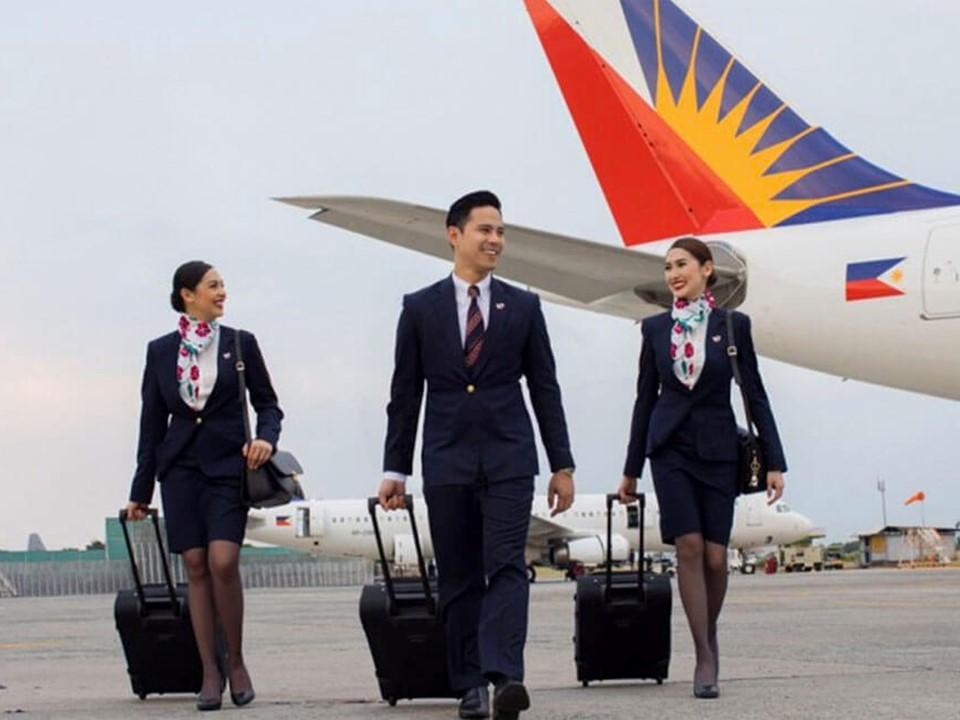
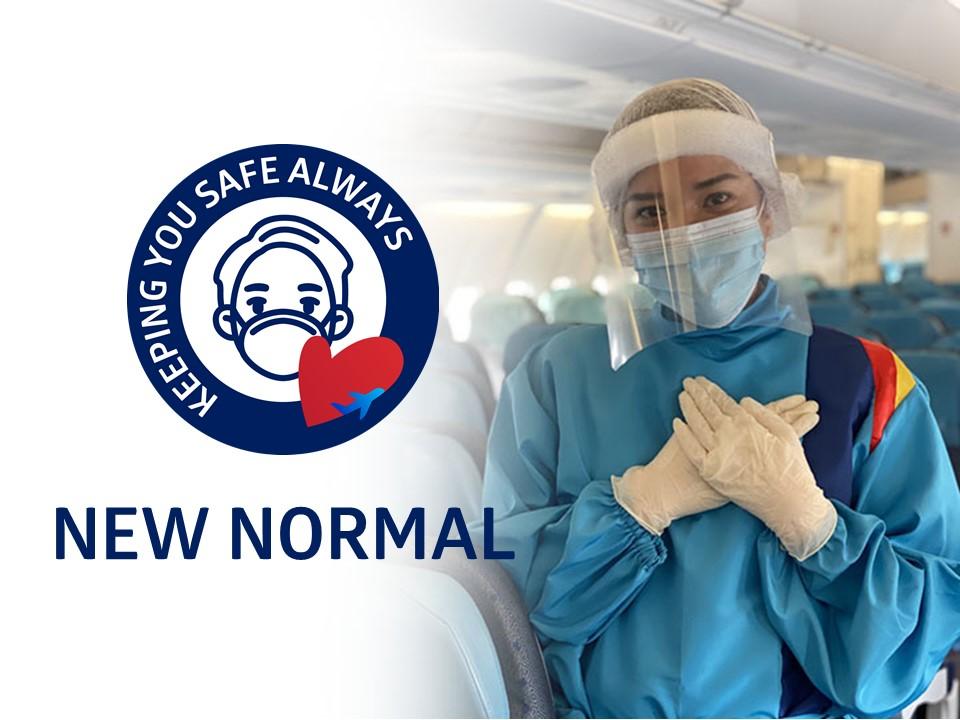
Philippine Airlines Flight Attendant Uniform
Philippine Airlines’ flight attendants wear a combination of a tailored white shirt and khaki-colored suit and pants or knee-length skirt. The uniform is paired with a neatly-tied red, white, and blue scarf. The beautiful yet practical design helps flight attendants to be more responsive and swift in serving all passengers without abandoning the visual statement of Philippine Airlines and its national pride.
Uniform in New Normal
Philippine Airlines is offering its flight attendants full protective gear to operate flights. The uniform is specially designed for the airline with the colors of the airline and flag of the country. The suit is extensive, covering flight attendants from head to toe with hospital-style uniforms. The red, yellow, and blue stripe is representative of the flag of the Philippines.
Philippine Airlines Baggage Allowance
Flight Route | Seat Class | Cabin Baggage | Check-in Baggage |
Domestic | Economy Supersaver | maximum total dimension of 56 cm x 36 cm x 23 cm and maximum weight of 7 kgs. | No Check in Baggage |
Economy Saver | 10 Kg. | ||
Economy Value / Economy FlexEconomy Flex | 20 Kg. | ||
Premium Economy | 25 Kg. | ||
Business Value | 30 Kg. | ||
Business Flex | 35 Kg. | ||
To/From Bangkok - Philippines * Promotional Baggage allowance for Sales/ticketing ON/AFTER 15 feb 21 AND ON/BEFORE 31 Dec 2021 | Economy Class | 25 Kg. | |
Premium Economy Class | 30 Kg. | ||
Business Class | 35 Kg. | ||
Economy Class (Promotional) | 30 Kg. | ||
Premium Economy Class (Promotional) | 35 Kg. | ||
Business Class (Promotional) | 40 Kg. | ||
To/From Bangkok - Japan Australia/New Zealand/Port Moresby | Economy Class | 25 Kg. | |
Premium Economy Class | 30 Kg. | ||
Business Class | 35 Kg. | ||
To/From Bangkok - US/Canada/Middle East | Economy Class | 2 pcs (max. 23 kg/pc) | |
Premium Economy Class | 2 pcs (max. 25 kg/pc) | ||
Business Class | 2 pcs (max. 32 kg/pc) | ||
Flight from / to London | Economy Class | 30 Kg. | |
Premium Economy Class | 35 Kg. | ||
Business Class | 40 Kg. |
Philippine Airlines Passenger Policy
Infant Passenger Policy (0-2 Years Old)
- For safety reasons, infants younger than 16 days old are not allowed onboard.
- Infants under 2 years old are listed as “no seat” passengers. Parents or guardians do not need to reserve individual seats for them, and they can list the infants through their online reservations.
- Philippine Airlines have a One-Infant-Per-Adult policy. Adult passengers do not need to pay for an individual seat for an infant, but each adult can only have one infant on their lap or in their arms.
- Baby bassinets are available in all Philippine Airlines aircraft except Q300, Q400, A320 and A321, but only for three-hour or longer flights. Passengers must make a reservation for baby bassinet at least 24 hours before departure time.
- Infant passengers flying from the Philippines to the US, Canada or Guam get an additional baggage allowance of 10 kg and one collapsible stroller or chair, as long as the infant pays at least 10% of the adult passenger’s fare.
- Infant passengers flying from the Philippines to countries other than the US, Canada or Guam get an additional baggage allowance of 7 kg and one collapsible stroller or chair, as long as the infant pays at least 10% of the adult passenger’s fare.
- Philippine Airlines does not provide special food for infants. Parents are advised to prepare baby food themselves, especially if the infant is allergic or requires special food due to health reasons.
- If an infant passenger has a chronic illness or other specific health conditions that require special attention, parents or guardians must inform the airline during booking.
- Philippine Airlines are not responsible for any possible relapse of chronic conditions, or any situations beyond the airline’s control.
Child Passenger Policy (2-12 Years Old)
- Child passengers aged 2 years and above must book individual seats for safety reasons. The standard child seat fare applies for such passengers.
- If an infant turns 2 years old by the date of the return flight, parents or guardians are required to confirm the scheduling, seat reservation, and additional fare, and pay for the standard child seat fare for the return flight.
- Child passengers must be accompanied by an adult aged at least 18 years. Anyone under 18 is not counted as a companion for a child on a flight unless under specific reasons approved by the airline.
- Children accompanied by adults other than parents must carry lawful letters and documents explaining the parents’ absence, which includes such as cases as sickness, death, and immigration problems.
- Only children between 8 and 12 years old are allowed to travel without a company, but they must provide special clearance, valid reasons, and permit.
- Unaccompanied minor passengers need to apply using Davao City Children's Welfare Code (DSWD) form, which is compliant with the most current Philippine regulation. Parents or guardians can download the form at DSWD’s official website: https://www.DSWD.gov.ph
- Philippine Airlines applies an additional fee for every unaccompanied minor.
- Philippine Airlines requires the Unaccompanied Minor passenger to be picked up according to the prior arrangement between the airline and parents or guardians. If no one picks up the Unaccompanied Minor, the child will be flown back to the origin city, and parents or guardians must pay the fare.
- Parents or guardians must provide details about the meeting party for the unaccompanied minor and submit the information to Philippine Airlines reservation office. The information includes the place of meeting, time, and description or identity of the pick-up party.
- All the documents and lawful letters required of the unaccompanied minor passengers must be submitted to the Philippine Airlines.
- If a child passenger has health problems or specific conditions that require special care, parents or guardians need to inform the airline during booking.
Pregnant Passenger Policy
- Pregnant passengers are required to fill the Expectant Mother Information Sheet (EMIS) form, which can be downloaded in the Philippine Airlines official website, and submit it to the nearest Philippine Airlines ticket office.
- Passengers within 24 weeks of pregnancy with no complications or special conditions that need extra care are allowed onboard after filling in the EMIS Form Part 1 and do not require medical clearance.
- Passengers within 24 to 32 weeks of pregnancy with no complications or health problems are required to have her personal doctor or physician fill in EMIS Form Part 2.
- Passengers beyond their 32 weeks of pregnancy are required to have their EMIS Form Part 3 be filled by the Company Physician or Flight Surgeon.
- Each EMIS form is valid for only seven days after the date of form issuance. All pregnant passengers must always fill in the form before flying with Philippine Airlines.
- Pregnant passengers younger than 21 years old must bring a letter of consent from the parent, legal guardian, or husband.
- If a pregnant passenger has complications or specific conditions that can affect her pregnancy, she must confirm with the airline and OB/GYN doctor prior to booking.
Disabled Passenger Policy
- Philippine Airlines provides wheelchair service for elderly and disabled passengers during departure and arrival, complete with an escort. The escort will still be available even for passengers who bring their own wheelchairs.
- Wheelchair and escort services are only available to transport passengers from the departure area to the plane or from the plane to the arrival area. The service is not available for personal errands, such as shopping at a duty-free shop.
- Wheelchair service can be requested at every Philippine Airlines ticket counter or reservation office. The airline will only serve passengers who have made prior wheelchair orders to the airline.
- Medical Information Form (MEDIF), which can be downloaded in the Philippine Airlines official website, is required for wheelchair service.
- The MEDIF must be filled and submitted at least three working days before departure. All information about the passengers must be accurate and true.
- Passengers who carry their own wheelchairs must confirm with the airline during booking. The wheelchair must be folded, secured and stored in upright position.
- Passengers must make sure that the wheelchair is safe from fire hazards. The battery must be attached securely, and the battery terminal must be insulated.
- Philippine Airlines categorizes wheelchairs with easily-spilled batteries as dangerous. This type of wheelchair can be carried to the plane under a very specific condition, and with restrictions.
- For safety reasons, the airline may limit the type of wheelchair passengers can bring onto the plane. Make sure to confirm with the airline before deciding to carry any type of wheelchair.
Philippine Airlines Check-in Policy
Philippine Airlines Check-in Time
Please find the check-in time for all Philippine Airlines flights on the table below. Check-in time may vary if your flight is operated by a partner airline. Please check your e-ticket to ensure.
Flight Route | Recommended Check-in Time | Check-in Time Limit |
Domestic | 2 hours before departure | 45 minutes before departure |
International | 3 hours before departure |
Philippine Airlines Online Check-in
Online check-in is also available for Philippine Airlines flights. Please follow the steps below.
- Go to Philippine Airlines web check-in page
- Enter your booking code, or other booking details, as instructed
- Complete your check-in details
- Save and/or print your boarding pass
Philippine Airlines Refund Policy
In general, refunds are permitted for personal reasons (self-cancellation, sickness, pregnancy, or death of a passenger), cancellation/rescheduling by the airline, force majeure, or double booking. However, different airlines have different policies regarding acceptable refund reasons. Please visit Philippine Airlines Refund Policy for a complete information on refund.
Philippine Airlines Reschedule Policy
You can easily change your flight schedule and itinerary using Easy Reschedule. Some airlines allow changes to date, time, route, and airline, while some only allow changes to date and time.
Please refer to Philippine Airlines Reschedule Term & Conditions to find the complete guide to rescheduling your flight. If your flight is not eligible for Easy Reschedule, please contact Philippine Airlines directly to reschedule.
About Philippine Airlines
Philippine Airlines (IATA Code: PR) Philippine Airlines is founded by a group of businessmen led by Andres Soriano, one of the country's leading industrialist in February 1941. A month after being incorporated by a group of Filipino businessmen, Philippine Airlines takes to the skies with a twin-engine, five-seater Beech Model 18 aircraft from Nielsen airfield in Makati to Baguio on March 15, 1941.
Philippine Airlines always tries to show the essence of Philippine pride in various aspects. It’s first slogan was “Mabuhay”, a Tagalog phrase that means “Welcome”. The slogan had changed several times before it finally became “The Heart of the Filipino”, following its 75th anniversary.
Philippine Airlines’ logo had changed several times. This current logo redesign since 1986 by adding the yellow rays of the sun tucked between red and blue triangles, symbolizing the country’s flag and national pride. The lettering was also refined and now it features a delicate and smooth italicized Sans-serif typeface, which looks friendly and welcoming, while its black color points to the company’s reliability and expertise.
As of now, Philippine Airlines is one of the leading flag carriers in Southeast Asia, serving both passengers and cargo. Headquartered in Pasay, Philippine Airlines has its main hub at Ninoy Aquino International Airport in Manila. The airport’s secondary hubs are located in Clark International Airport in Angeles City, Mactan – Cebu International Airport on Mactan Island. Francisco Bangoy International Airport in Davao and Iloilo International Airport. Philippine Airlines is the only airline in the Philippines that has earned safety accreditation status from the International Air Transport Association (IATA).
During its service, Philippine Airlines has earned several achievements, such as becoming the official airline for the first state visit of President Ferdinand Marcos after his election in September 1966, monopolizing the domestic air travel in the Philippines in January 1974, earning the prestigious Les Chaines de Rotisseurs award for its high-quality in-flight meals in July 1979, earning the Airline Turnaround of the Year award from Centre for Asia Pacific Aviation in November 2007, emerging as the most trusted airline brand at the annual Reader’s Digest Asia-wide consumer survey in May 2010, and becoming the official carrier for Pope Francis during his visit to Tacloban, where he met with the survivors of typhoon Yolanda in January 2015.
In 2018 is a big won for our airlines. Our hearts beam with pride as Philippine Airlines is awarded a 4-Star rating from Skytrax, the international air transport rating organization. Across Skytrax's 45 global quality metrics that measure product and service quality, the Philippines’ flag carrier has proven its excellence and commitment to world-class standards. In 2019 Philippine Airlines not only remain standard with 4-Star rating by Skytrax but also won the World’s Most Improved Airline award, jumping 19 spots from being top 49 in 2018 to ranks 30th airline in the world in 2019.
In 2020, Philippine Airlines is among the top 10 airlines of the world in terms of traveler health and safety protocols adopted during the coronavirus pandemic, according to industry rating firm Safe Travel Barometer (STB)
More than 60 aircraft in its fleet, Philippine Airlines currently serves flights to 35 domestic and 41 international destinations around the world, including North America: The United States, Canada. Europe: United Kingdom. Asia and Oceania: Australia, New Zealand, Guam, Cambodia, China, India, Indonesia, Japan, Macao, Malaysia, Papua New Guinea, Singapore, South Korea, Taiwan, Thailand, Vietnam, United Arab Emirates, Qatar and Saudi Arabia.
To serve you better, Philippine Airlines is working on broadening its route network through Codesharing with select airlines, providing you with more destinations worldwide. In addition to PAL's own operated flights, PAL offers these flight sectors operated by our Partner Airlines such as Cathay Pacific, Turkish Airlines, All Nippon Airways, Gulf Air, China Airlines, Royal Brunei Airlines, Hawaiian Airlines, WestJet, Malaysia Airlines, Xiamen Airlines, PAL Express and Bangkok Airways
Philippine Airlines Booking & E-ticket
How to Book
Here’s how you can book your Philippine Airlines ticket online:
- Go to Traveloka Travel and Lifestyle SuperApp or open your Traveloka App
- Fill in the flight details in the search box
- Choose and book your flight
- Fill in contact information and passenger details
- Complete your payment through the selected method
- Receive your Philippine Airlines e-ticket in My Booking or in your email
How to Pay
Payment for your Philippine Airlines ticket can be made via bank transfer, internet banking, ATM bill payment, counter payment, 7-Eleven, and credit/debit card. For complete information about payment methods, please visit How to Pay.
Philippine Airlines E-ticket
Philippine Airlines e-ticket is an eligible proof for booking an Philippine Airlines flight. Show your e-ticket during check-in at the Philippine Airlines counter at the airport, or use it for self check-in (at the airport or online), to get your boarding pass. If you have not received your e-ticket within 60 minutes after payment is completed, please contact Traveloka Customer Service.
Philippine Airlines Destinations
Philippine Airlines Popular Routes
Contact Philippine Airlines
Philippine Airlines Office
Philippine Airlines
12th Floor
Monorom Bldg
3354/41, Rama 4 Road, Klongtoey
Bangkok 10110 Thailand
Contact Philippine Airlines
+662-633-5713
Popular Hotels

































































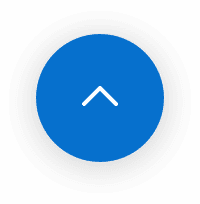
 Facebook
Facebook Instagram
Instagram TikTok
TikTok Youtube
Youtube Twitter
Twitter Line
Line
